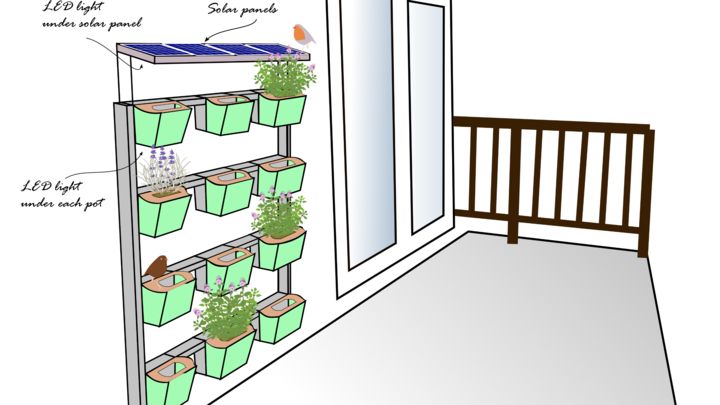Grow Urban Biodiversity
The Problem
Urban development is the third biggest threat to species extinction as natural spaces are converted to fulfill the needs of a growing global population. Green spaces and features, such as parks and gardens, increase biodiversity in cities, and their availability to urban species populations is critical to global biodiversity conservation efforts and to providing important ecosystem services. For example, bees are essential for urban agriculture (i.e. agriculture within and near cities) and native gardens, since they represent one of the main pollinators of plants. However, the size and number of green features in urban areas are limited by the need to build housing and functional spaces for growing city populations. As a result, habitats for species, such as insects and birds, are isolated and scarce within the urban landscape. This is concerning since the area of land used for cities is expected to grow with the global population, which is estimated to reach 9.8 billion people by 2050.
Our Proposal
Hydroponics is an emerging new method of soilless gardening that is being increasingly used in agriculture to make better use of space and location. Yet this approach for consumers has largely been limited to miniature indoor hydroponic gardens for growing microgreens. Our solution is to use this technology to build an outdoor ‘vertical’ hydroponic garden that allows people living in urban apartments with limited outdoor space, such as balconies, to grow plants and vegetables without compromising their space – a key barrier for urban growing. The solution will increase the availability of micro-habitat patches that support bird and insect species in urban areas by targeting the needs of city gardeners. Our solution uses technology to address two key behavior change levers, ease-of-use and desirability, and directly addresses end user barriers to urban gardening - lack of space, time and knowledge. The vertical garden will use solar-power to work LED lights that allow growth in areas with limited sunlight availability, for example if direct sunlight is limited in building-crowded areas, and to support water circulation. Accompanying the hardware will be a mobile application that simplifies the process for gardeners to select plant mixtures/combinations based on their needs and wants (e.g. from food production to aesthetics) whilst maximizing urban biodiversity.
We Assume that...
Our solar light setup can generate enough energy to run the garden primarily through solar power and our LED lights can compensate for limited direct sunlight.
We can develop a vertical garden that is still low enough in cost that it is accessible for our target user.
Users are willing to pay for increased access to vertical growing spaces.
Users will continue to value growing in the future (e.g. for food, aesthetics, or stress-release).
Constraints to Overcome
Addressing biodiversity loss in urban areas is challenging due to political, socioeconomical and cultural influences. One of the main barriers to biodiversity conservation is that people living in cities rarely invest finances to directly increase biodiversity, even when they have positive attitudes towards conservation. Gardens increase biodiversity in densely populated areas; however, city inhabitants cannot unlock the full potential of outdoor spaces for gardening. By offering a hydroponic, easy-to-use vertical garden, city inhabitants will be able to transform their outside spaces into micro green spaces. Our solution will address issues around space, time and light to make urban gardening more accessible. In this way, we help create green spaces for birds and insects by solving a problem for our users that they are already actively trying to fix.
Current Work
(1) continued customer discovery and customer validation; (2) networking and creating a community of urban gardeners around our solution; (3) product prototyping and development: buying off-the-shelf components to create a proof of concept device to test our prototype assumptions.
Current Needs
(1) funding for customer development/validation and product prototyping; (2) mentors or collaborators with experience in hydroponic technology; (3) makers space for creating prototype.
